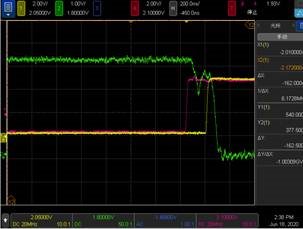Other Parts Discussed in Thread: SN65HVD251, SN65HVD233, TCAN330
Hi, expert
My customer is using four CAN transceivers, and when the receiver node receives right signal, then output ACK. But every node will have a response difference at maximum 250ns. So the CAN bus will see a ring, is this ring matters? can customer reduce this ring by configurating DSP ?
The yellow waveform is DSP CAN1's transmit pin, the red waveform is DSP CAN2's transmit pin, and the yellow waveform is CAN bus's waveform.
there is a ring in the CAN bus.
Best Regards.
Chen




